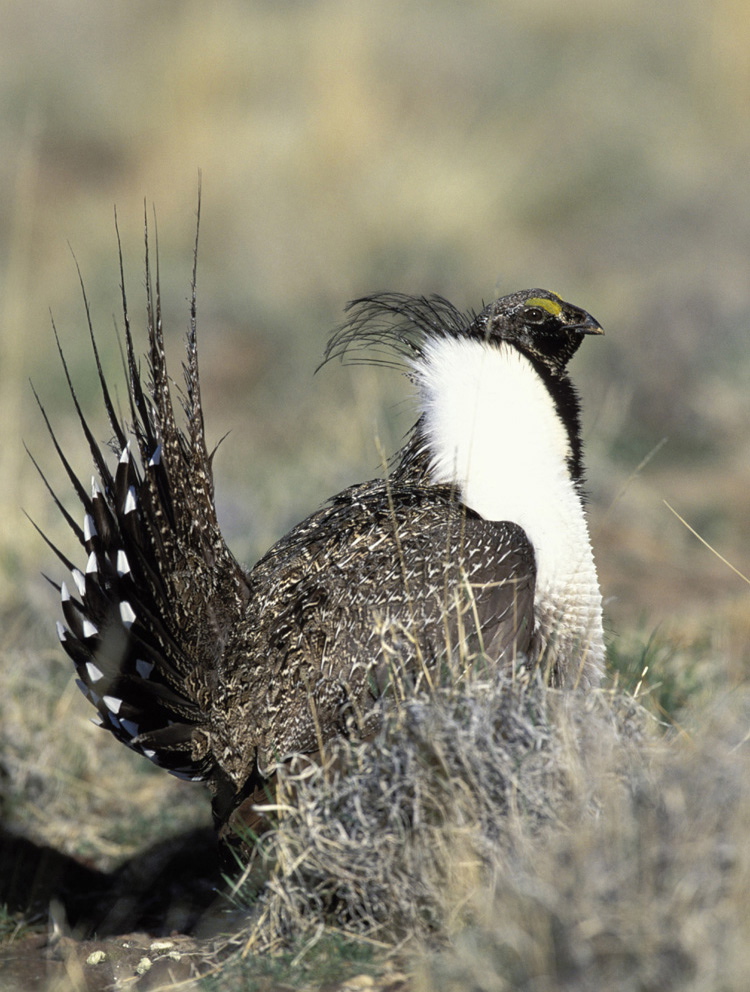GRANTS PASS, Ore. — Hoping to keep the sage grouse from the endangered species list, ranchers in Eastern Oregon are working on a first-in-the-nation deal that would lay out voluntary steps to reduce the harm to sage grouse on 10 million acres of federal grazing lands.
“The livestock industry knows this is an important issue, and wants to be in position to somewhat control our destiny,” said John O’Keefe, a Warner Valley rancher and sage grouse coordinator for the Oregon Cattlemen’s Association.
The Oregon Cattlemen’s Association was supposed to sign the agreement last Tuesday with the U.S. Bureau of Land Management and the U.S. Fish and Wildlife Service in Oregon that would be the first in the nation covering sage grouse, sometimes called the spotted owl of the range because of its potential to force cutbacks in grazing and energy development.
However, some ranchers asked for more time to consider details, postponing the signing. BLM spokesman Jeff Clark said they hope to have it worked out in two or three weeks. Though BLM has conservation agreements for other species, this would be the first for sage grouse, Clark said.
“Our goal is to not have (the bird) get listed,” BLM biologist Glenn Frederick said. “There are measures the rancher can do above and beyond regulatory measures that can help the bird. That is what this is about.”
It is anyone’s guess how many Oregon ranchers will sign up.
The BLM has run into trouble for turning a blind eye to sage grouse in favor of ranchers. In Idaho, a federal judge ruled last year that BLM violated its primary range management duty by allowing grazing on five allotments in Owyhee County without first assessing the harm to sage grouse.
Populations down 90%
The greater sage grouse is a large ground-dwelling bird, standing up to two feet tall and weighing up to seven pounds. They are known for elaborate mating dances at regular gathering places, called leks. Populations have fallen 90 percent in the past century, and habitat has declined 50 percent. The birds face threats from grazing, energy development, wildfire, and the spread of juniper trees.
As the result of a lawsuit, Fish and Wildlife has declared nearly 200 species deserve protection, but must wait their turns to be formally considered. The sage grouse’s turn comes in 2015, by which time states and federal agencies hope they will have done enough to make that step unnecessary.
Details of the Oregon agreement have not been made public, but Frederick said it includes measures to keep people and livestock away from leks and nesting areas where sage grouse gather at crucial times, and to reduce the numbers of birds killed or injured from flying into wire fences by putting white plastic markers on them.
Brent Fenty of the Oregon Natural Desert Association, a conservation group, said it has not been allowed to see the agreement, but hoped it would help sage grouse.
Fenty added that it was unlikely to include one of the most important steps for protecting the bird: taking cattle off range that has been overgrazed.
Populations are robust enough in some places that Oregon and several other states still allow hunting.
That gives O’Keefe hope that if enough ranchers step up and sign the agreement, they can avoid even tougher limits in the future.



